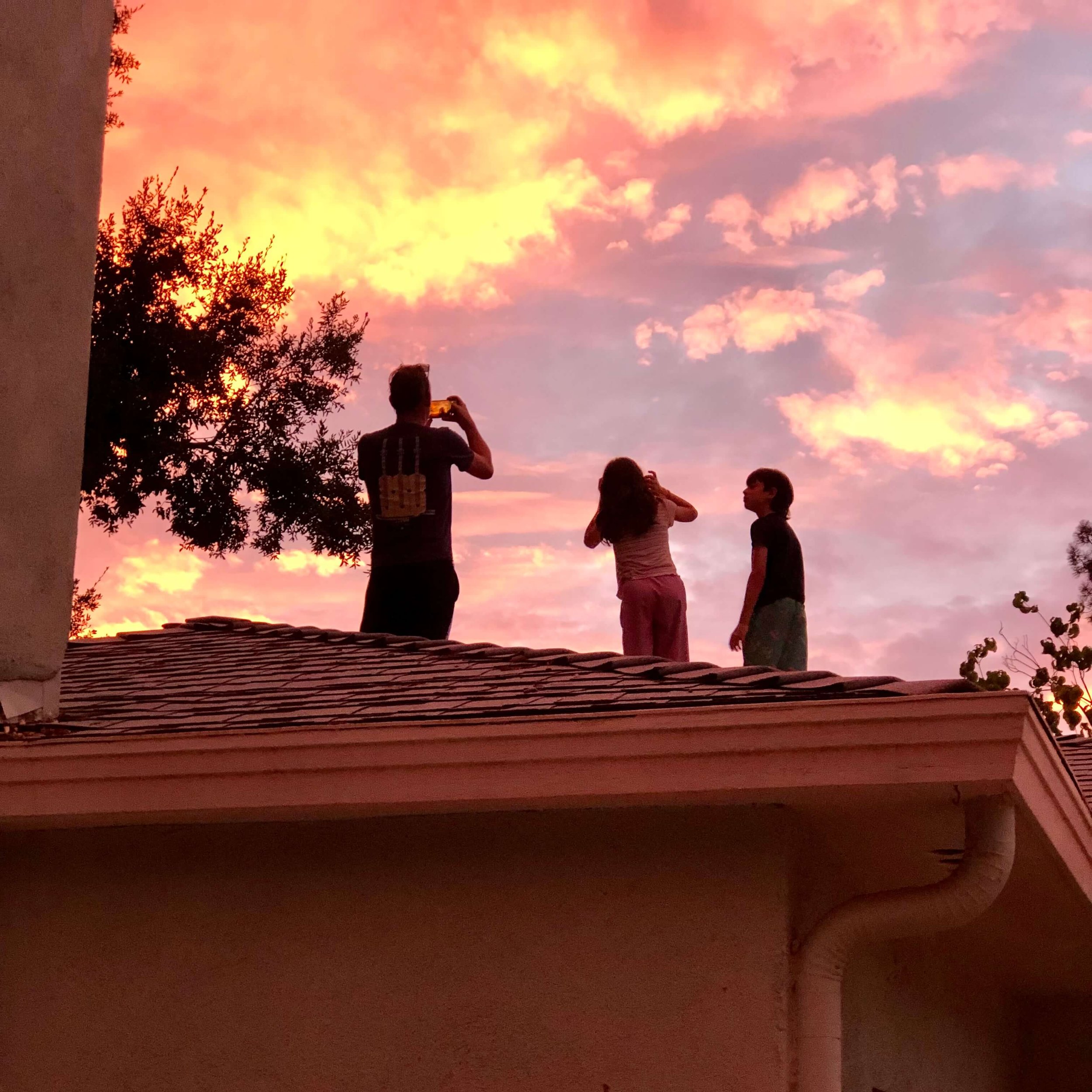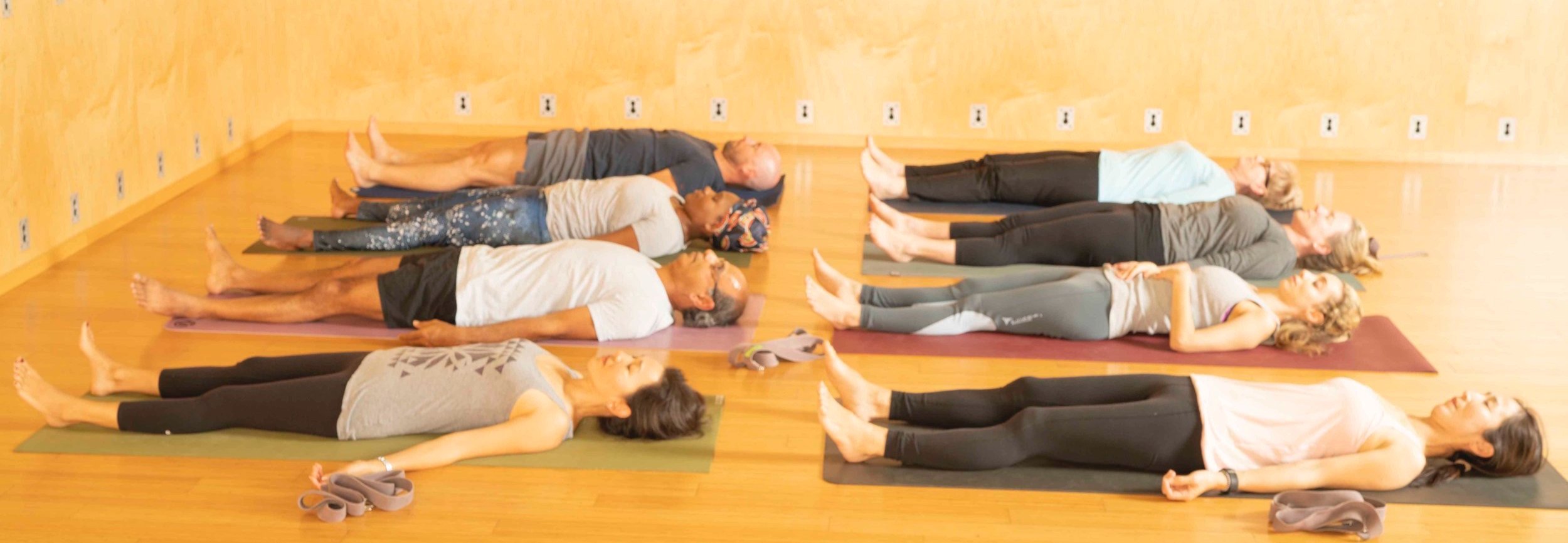Ayurveda: Vata Dosha
Vata Dosha - the Ayurveda constitution borne of air and ether.
About Vata Dosha
Ayurveda (“science of life” in Sanskrit) is an ancient healing system that originated from India over 3000 years ago. It is a holistic, individualized practice that uses diet, herbs, yoga postures, pranayama, and meditation to maintain health and prevent disease. Yoga and Ayurveda are sister sciences, rooted in the Vedic tradition.
There are three Doshas that compose our individual constitutions:
Vata (ether/air)
This blog is a deep dive into Vata.
Vata Dosha Characteristics
“That Which Moves Things”
Energetic, kind-hearted, and creative.
Naturally slim, flexible, with lean bones.
Thinks outside the box but can become easily distracted.
Mood is highly affected by weather, people around them, and foods they eat.
Learns quickly, great multitasker, regularly “on the go".
Forgetful, anxious, fluctuating moods, can get easily overwhelmed.
Light sleeper.
Irregular appetite and eating patterns, prone to digestive issues.
Sensitive to the cold.
Poor circulation with cold hands and feet.
A vata-dominant person benefits from regular daily routines, staying warm, meditation, and calming activities. Generally, all six tastes (sweet, sour, salty, pungent, bitter, and astringent) are recommended for optimal digestion. Foods that are considered great for balancing vata are sweet, sour, and salty; and those that are moist, warm, and cooked.
A beautiful pink Fall sunset with light breeze. (Fall to Early Winter is Vata…the seasons have doshas, too.)
Vata Dosha in Balance
Coordinated mind and body
Coordinated responses to stimulation
Clear thought, feelings, and actions
Easy movement
Sensory integration
Smooth mental processing
Creative flow
Joy
Energy and pranic flow
Nervous system supported by breath
Tissue and organ homeostasis
Easy breath
Imbalanced Vata Dosha
Dry skin
Anxiety
Poor memory
Trouble falling asleep / waking at night / fearful dreams
Irregular appetite
Hiccups and belching
Constipation and/or flatulence
Cold hands and feet
Dry cough / hoarse throat
Shortness of breath
Stiff muscles and joints / cracking joints
Bone density issues
Restless legs / tapping fingers / pulling hair
In Ayurveda, opposites heal.
Attributes of Vata Dosha
Dry
Light
Clear
Cold
Rough
Subtle (not gross)
Mobile
Food/Drink to Balance Vata
Vata benefits from foods that are sweet, sour, and salty in taste.
If you tolerate dairy, incorporate thick and moist products like yogurt, kefir, soft cheeses, warm whole milk, and sour cream into your diet; use heavier oils and fats like ghee, butter, olive oil, sesame oil, avocado.
Use sweeteners like honey (in moderation), real maple syrup, stevia (in moderation), dates, or rice syrup, and avoid refined sugars.
Drink room temperature water with lemon or lime, chai tea, vanilla tea, tulsi tea. If you drink alcohol, sweet whites or reds are best, no bubbles (astringent), and not to excess.
Eat veggies/fruits like butternut squash, pumpkin, sweet potatoes, spinach (wilted), cooked carrots, carmelized onions, creamed corn, zucchini, mangoes, ripe bananas, grapefruit, orange, Meyer lemons, guava, peaches
Most nut butters are good for vata, nut "milks,", soaked or salted nuts, sesame seeds (when salted and warmed), sunflower seeds
Use grains like rice, quinoa, whole wheat, oats
Avoid or consume in moderation the following: dry, light, astringent, and bitter veggies and fruits (cucumbers, potatoes, peas, green beans, cauliflower, broccoli, dark leafy greens, radishes, onions, garlic, raw veggies, plantains, cranberries, pomegranates, apples, raspberries); coffee, black tea, kombucha, rosewater, gin, vodka, most liquors, beer, dandelion and nettle teas; refined sugar; sesame seeds, mustard seeds, black beans, chickpeas, black-eyed peas; cold milk and hard cheeses; corn, popcorn, millet, yeast breads, buckwheat, rye, puffed cereals
Eggs, beef, chicken (especially dark), turkey (dark meat), duck, fish (fresh and salt water), seafood.
Most spices are great for vata. Avoid very spicy food and use spices and condiments like cayenne and chili powder in moderation.
Generally, from a dietary perspective, the fruits/veggies on the "avoid" list are nutritious. In Ayurveda, opposites balance things out. If you're trying to balance Vata and plan to eat broccoli (a staple of this Vata woman's diet), balance out its drying qualities by steaming it and adding ghee (I use butter), salt, and lemon. I generally start my day with a coffee or Assam black tea. I like it. I add whole warm milk to balance it out, and the coffee/tea I buy isn't terribly astringent. I am motivated to do these things because I feel better.
This is general information and not a recommendation or individualized plan. Always consult a doctor before making changes to your diet or lifestyle.
12 Yoga Poses to Soothe Vata
Mountain Pose (Tadasana) - Stand with your feet parallel and slightly apart. Ears, shoulders, hips, knees, ankles are in line, as shown to left. Move some weight into your heels. Rotate your arm bones outward as you keep them at your sides. Hold for 5-10 breaths.
Tree Pose (Vrksasana) - Come to Tadasana. Ground your left foot and bring the sole of your right foot to your upper left thigh or left inner calf. Heel points up toward the groin, and toes point down toward the ground. Evenly press the four corners of the left foot into the right leg, keeping your pelvic as level as possible and facing forward. Place your palms together, hands at your heart, in Anjali Mudra. Hold for 5-10 breaths. Repeat on the other side. If your balance is challenged, do the pose at a wall or next to a chair, which you can use as support.
Standing Forward Bend (Uttanasana) - Come to Tadasana, with a gentle bend in your knees fold forward from your hips. If your hamstrings are tight, it’s OK to gently bend the knees more. Press strongly through your legs and feet, and let go through the upper body all the way to the crown of the head. Let the arms dangle, drawing the shoulder blades up toward the hips or clasp your elbows, changing the crossing of the arms hallway through. Hold for 10 breaths.
Downward Facing Dog (Adho Mukha Savasana) - From hands and knees, walk your hands forward a few inches. Keep your wrists parallel with the front of your mat or turn them out slightly. Your may be more comfortable if you move your hands out a little bit to each side, so your arms end up in more of a slight “V” than parallel. Plug in to the back of your body. Push the ground away and soften your shoulders away from your ears. With a long spine, lift your knees off the ground and press your thighs toward the back of the room. If your hamstrings restrict you in this pose, keep a bit of bend in your knees to elongate your back. Your heel likely will be off the floor. Stay 5-10 breaths.
Child’s Pose (Balasana) - From hands and knees, move your knees slightly out to each side, bringing your big toes together behind you. Sit back toward your heels, and reach your arms out in front of you along the floor. Keep the arms active or rest them. If your bum is in the air, place a folded blanket underneath. If the crown of your head dips toward the floor, rest your forehead on a block. If your ankles bother you, roll a towel and place it on the floor under the front of the ankles for support. Stay 10 breaths.
Garland Pose (Malasana) - This is a grounding squatting posture. From Tadasana, with your feet slightly separated and legs slightly turned out, bend your knees to squat. Place a folded blanket under the heels as needed for balance. If your knees make squatting a challenge, stack a block or two and sit back on them for support (keep working your legs). You also can work these component parts sitting in a chair. Place your palms together, hands at your heart, in Anjali Mudra. She is showing the fitness version to the right - you can hold your hands like that, too. Ground through the four corners of your feet, and lift through your spine. Breathe all the way down to your pelvic floor. Notice the gentle lift of your pelvic floor muscles and engagement of your abdominals with each exhale. Stay 5-10 breaths.
Staff Pose (Dandasana) - Sit on a folded blanket or two with your legs straight out in front of you. Use your hands to internally rotate your upper thighs. Place your fingers on the floor next to your hips or on blocks. Press your hands down and lift your chest. Stay 5-10 breaths.
Revolved Head-to-Knee Pose (Parivrtta Janu Sirsasana) - Start in Dandasana (see above). Rotate your right leg to the right. Bend your right knee, taking the knee out to the side, drawing the sole of the right foot to the inner left thigh. Hold onto your right shin and open open your right leg further to the right, bringing your heel to the groin. The pelvis will open more, and the top of the foot will roll toward the floor. Keep your left leg active, and both legs rooting pressing toward the ground. Take the back of the left hand to the inner left thigh, and reach the right arm up. Inhale, exhale and rotate your spine to the right. Inhale lengthen your spine, exhale side bend to the left over the extended leg. Continue to rotate your torso to the right. Stay 5-10 breaths. Return to Dandasana for a few breaths. Do other side.
Locust Pose (Salabhasana) - Lie on your belly, with your legs close together. Roll the very top of your inner thighs slightly toward the ceiling and direct your tailbone toward your heels. Press the tops of your feet into the ground. Reach your arms alongside your body, palms up, and lift them toward the ceiling. Keep your shoulder blades drawing down the back. Lift your forehead, nose, shoulders and chest, extending your upper back. Your abdominals stabilize your lower back. Breathe into your upper ribs. Stay 5-8 breaths.
Revolved Abdominal Pose Variation (Jithara Parivartanasana) - Lie on your back. Bend your knees and place your feet on the floor slightly wider than your hips. Stretch your arms out to the sides like a "T". Draw your shoulder blades down your back. Press your feet down and move your pelvis a few inches to the left. Drop your knees to the right. Stay for 5-10 breaths. Inhale and bring the knees back up and your hips back to center. Move your pelvis a few inches to the right, drop your knees over to the left. Stay 5-10 breaths. Bring the legs up, shift back to center, take three breaths.
Legs Up the Wall Pose (Viparita Karani) - Place a bolster parallel to the wall, approximately six inches away from the wall. Sit sideways on its edge, and swing your legs up the wall as you lower your upper back, shoulders, and arms to the ground. Adjust your pelvis so it's neutral on the bolster, with the tailbone draping over the back of the bolster. Move a bit away from the wall if you are tucking under. For deeper relaxation, use a strap around your upper thighs to hold them together. Or place a sandbag on the feet. Easy breathing. Stay five minutes or longer. Set a timer with a very gentle alarm to ease you out of the pose.
Savasana (Corpse Pose) - Lie on your mat, a blanket, or carpet. Make sure you are warm. Turn your palms toward the ceiling and deeply relax your entire body, from the crown of your head, to your fingers and toes. Inhale to a count of 6, exhale to a count of eight. Stay for 5-15 minutes.
Pranayama for Vata
Belly Breathing - Do this pranayama seated or lying on your back in Savasana. In Savasana, you can place a rolled blanket under your knees, or a folded blanket or bolster on top of your thighs. Breathe easily in and out the nose. Let your belly swell with the inhale, and soften with the exhale. Your inhales and exhales are even in length. Stay for 8-12 breaths or longer.
Mental Alternate Nostril Breathing (Nadi Shodhana) - Do this pranayama in a seated position. Breathing easily in and out the nose, Imagine your breath entering the left nostril as you inhale, then imagine it leaving via the right nostril. Then imagine the inhalation coming in the right nostril, and out the left. This is one cycle. Inhale the breath in the left nostril up to your third eye, exhale from the third eye out the right nostril. Inhale through the right nostril up to the third eye, exhale from the third eye out the left nostril. Do three more rounds, for a total of 5 breaths. Tune into your breath, watching the airflow follow the pathways you are imagining.
Victorious Breath Variation (Ujayi Pranayama Variation) - Do this pranayama seated, lying on your back with a blanket rolled under your knees, or on your back with knees bent and feet on the floor. Breathe easily in and out the nose. Inhale to a count of four, exhale to a count of six. Or inhale to a count of six, exhale to count of eight. If you feel comfortable adding a pause to the breath and the top of the inhale and bottom of the exhale, do so. No gripping or holding. Set a timer that has a gentle chime to bring you out of your meditation. 8-12 breaths.
Meditations for Vata
Mantra Meditation - Choose a mantra that resonates with you. Here are some suggestions: Om Shanti Om, So’/inhale Ham/exhale, I am calm, Peace, Om, or Yogash Chitta Vritti Nirodhah. You can use a prayer, and it can be in any language you like. Sit comfortably, perhaps on a folded blanket or two, or cushion. Support your legs with blocks or a rolled blanket. Place your hands on your thighs, arms at your sides, spine long. Close your eyes and soften your facial muscles. Breathe evenly in and out for 5-20 minutes, repeating your mantra. Bring your mind back to your breath and mantra if it wanders, no judgment. Set a timer that has a gentle chime to bring you out of your meditation.
Affirmation: “I celebrate creativity and my spiritual nature in all I do. I embrace rhythm and steadiness.”
Lifestyle Activities that Support Vata
Warm bath - add a couple tablespoons of heavy oil in the water: sesame, almond, or avocado. Be careful getting out and wipe out the tub after because it gets slippery.
Essential Oil - add a drop or two of rose, sandalwood, or lavender to your bath or use in a diffuser.
Weighted Blanket - Use a weighted blanket when you sleep or relax.
Skin Care - Oil your body with a rich lotion or heavy oils like sesame, almond, and avocado.
Basic Ayurveda is a wellness tool in my kit. If you want to try it, explore, take small steps, observe how you feel, and adjust. Like anything, you can worry too much about doing it right or wrong (vata), try to control it and be perfect (pitta), or find it tiring to exert any energy toward it (kapha). Like most things, balance in the middle generally is optimal.
Don’t make any major lifestyle changes without consulting your doctor. To further implement in your life, please see a trained Ayurvedic practitioner.
About The Author
Gwen Yeager is an LA-based yoga expert who loves helping people deepen their practice in practical ways that work with real-life (she’s also a cancer survivor and mother of twins). She provides her students with resources to incorporate healthy movement, breathwork, and mindfulness into every nook and cranny of living. While her teaching style is down-to-earth and approachable — she’s a stickler about the science movement and proper anatomical alignment because nothing is more important than long-term mobility and a vibrant quality of life!




















